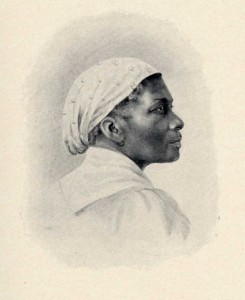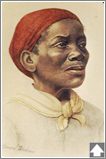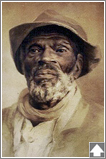The Civil War left Maria Howard Weeden impoverished. However being talented and accomplished at drawing, Howard (the professional name she used), made a unique contribution to an era in the history of the South with her watercolor portraits.

In 1893, Weeden traveled to Chicago for the World’s Columbian Exposition and saw the works of other artists. She disliked the common portrayal of the African-American such as A. B. Frost’s Illustrations for Joel Chandler Harris’s Uncle Remus tales and it inspired her to paint the people she had known all her life.
In the introduction to Bandanna Ballads (one of her published illustrated books of poetry), Joel Chandler Harris wrote: The art with which the facts are set forth is so felicitous in its touch, so faithful and so informing that it goes deeper than character and individuality; it revives and resurrects the period; in some mysterious way, it restores the atmosphere and color of the time. And each portrait stands out as a little masterpiece, harmonious, powerful, charged with feeling, and illuminated by the imagination that makes its creations more real than life itself.
She spent many years portraying servants, gardeners, cooks, nannies, and children. Her portraits were often devoid of background, but the subjects were given a sense of formality and dignity.


